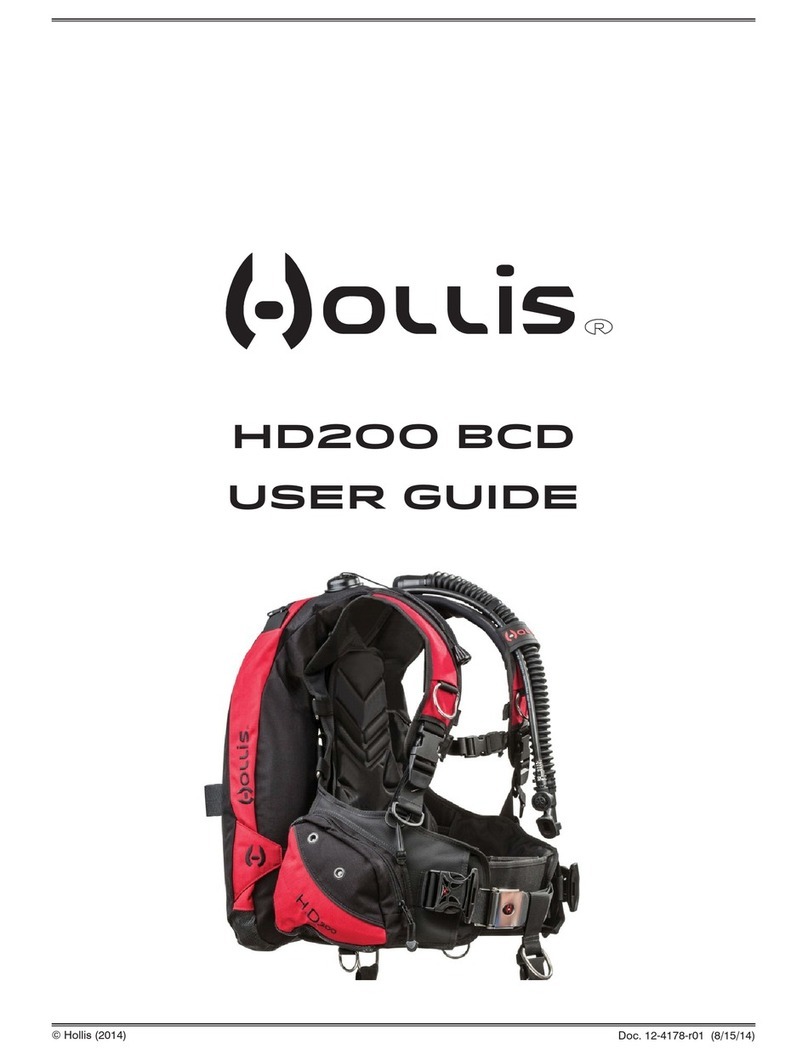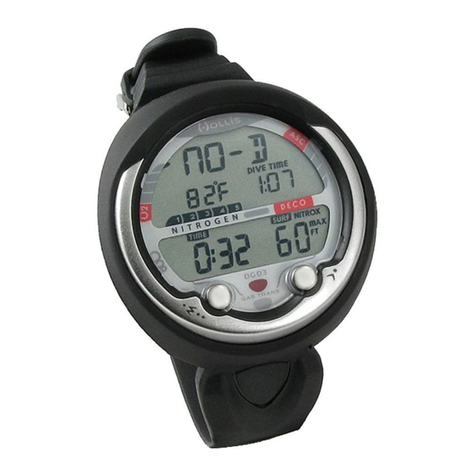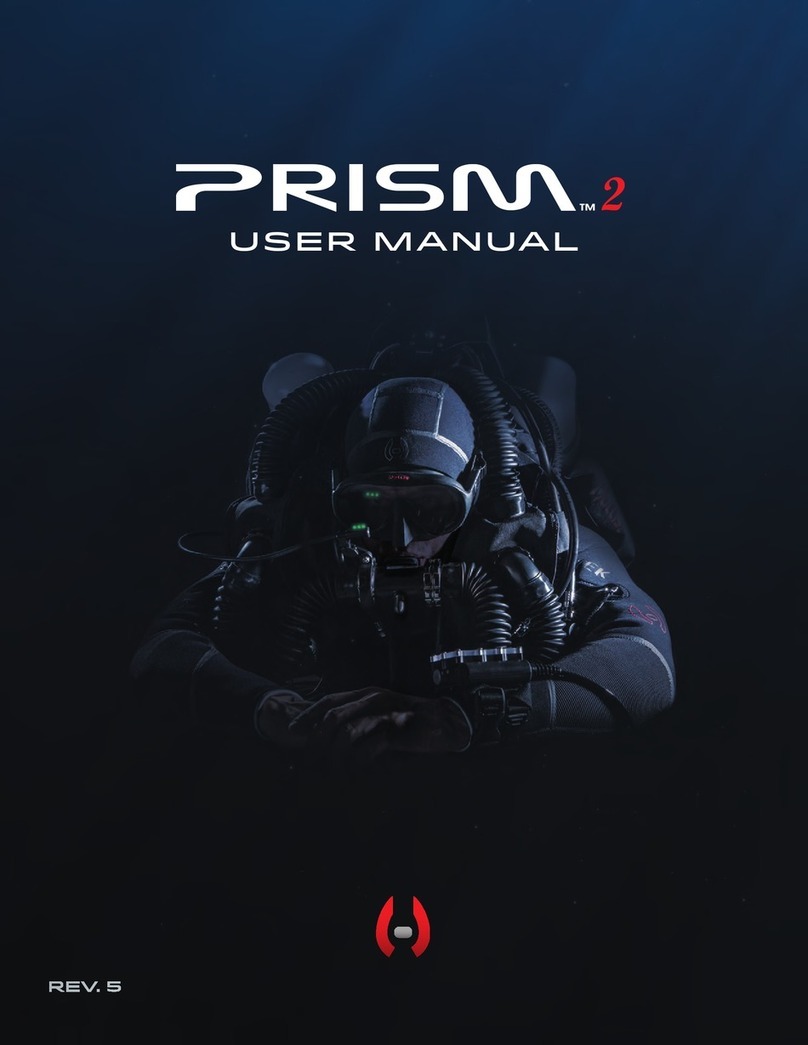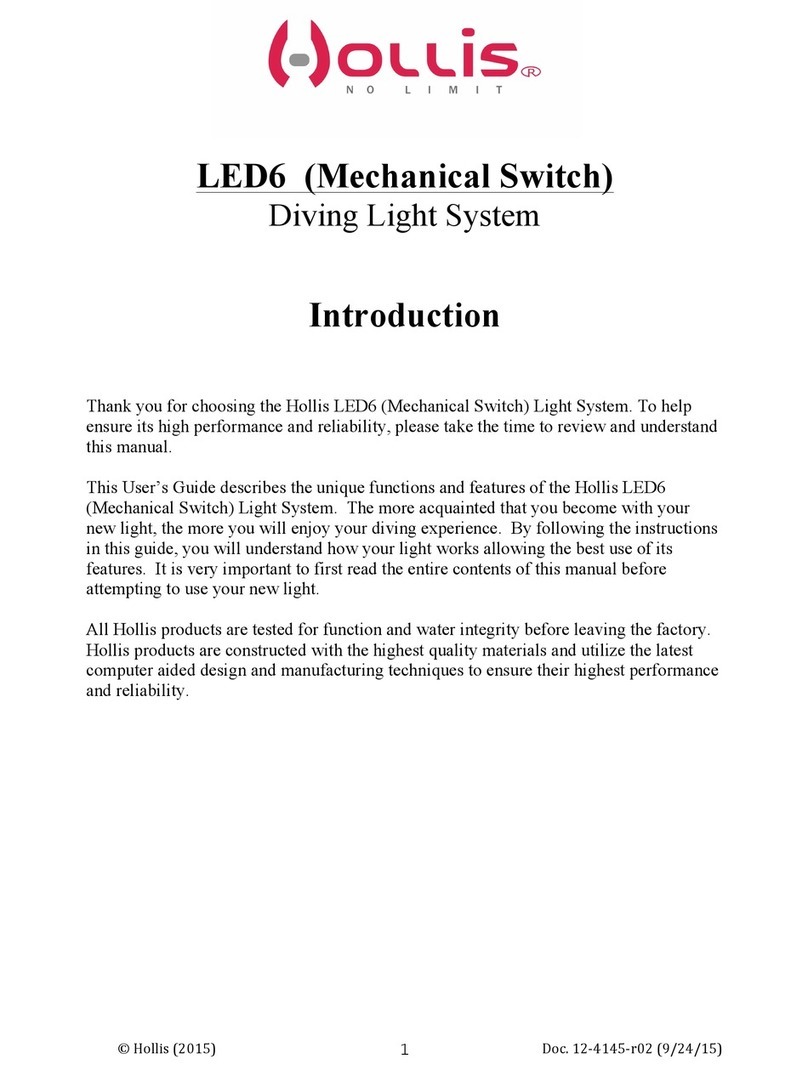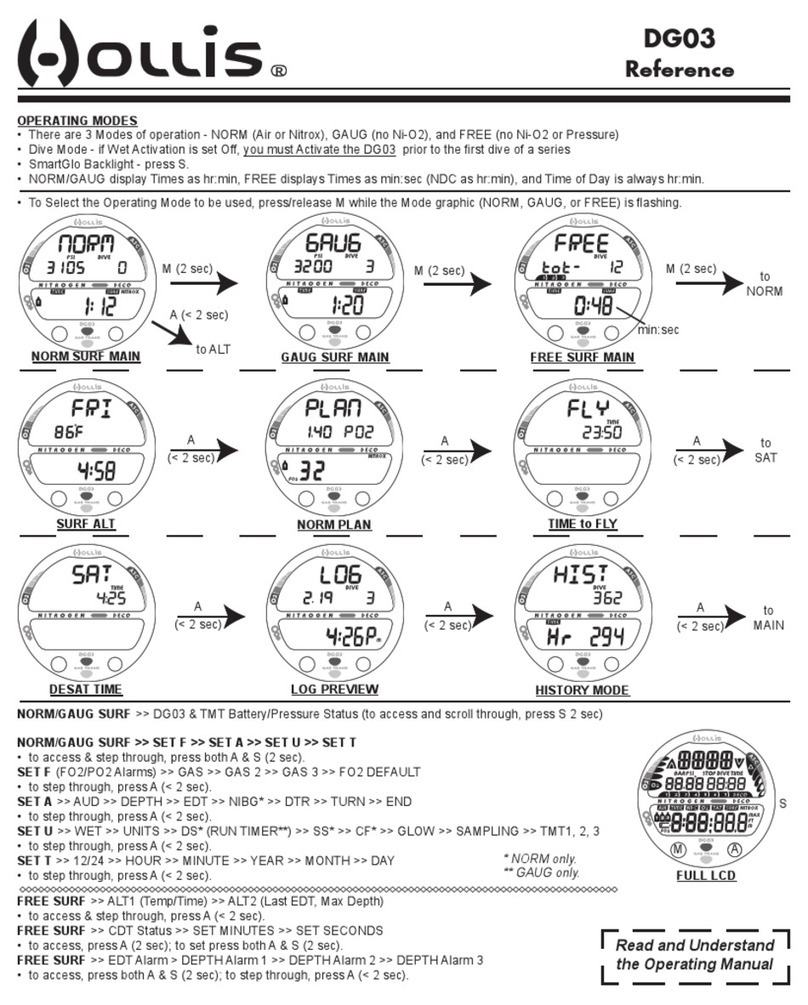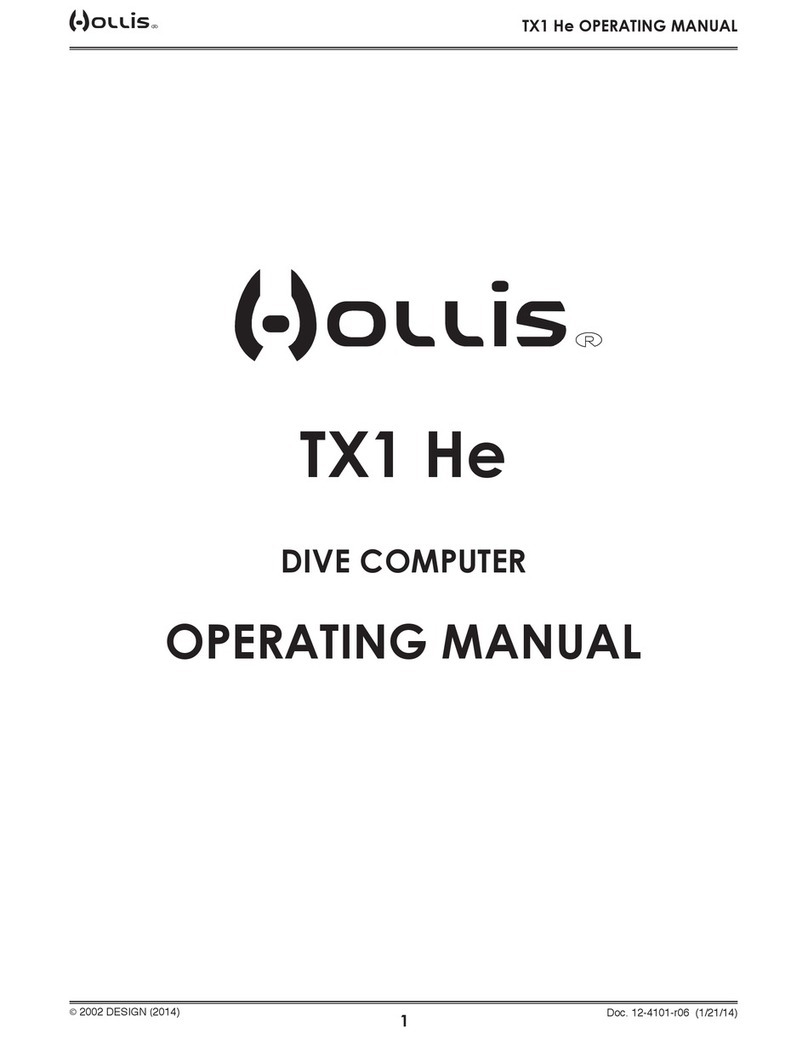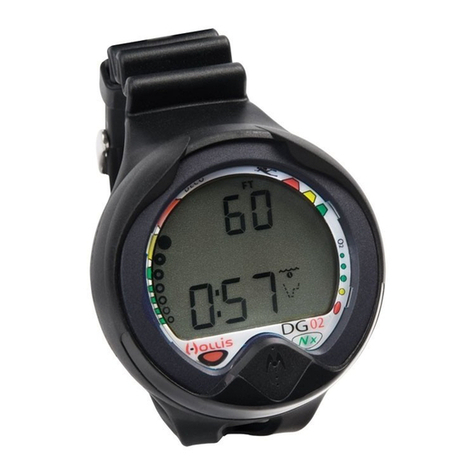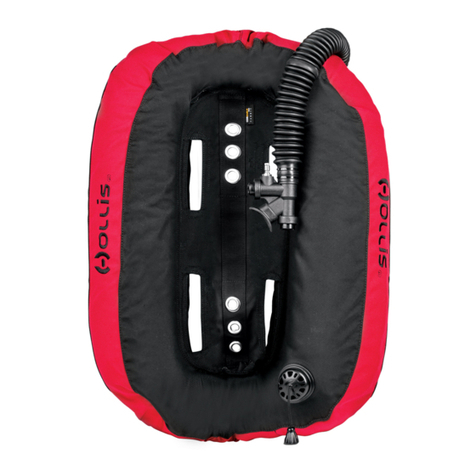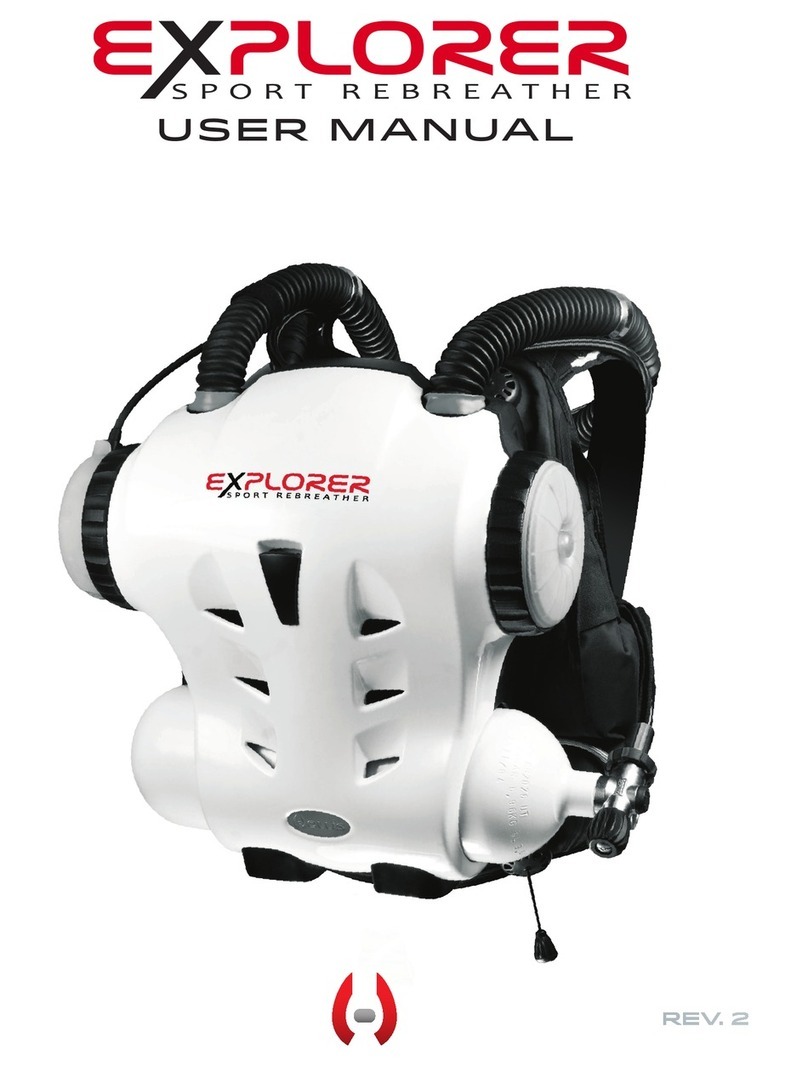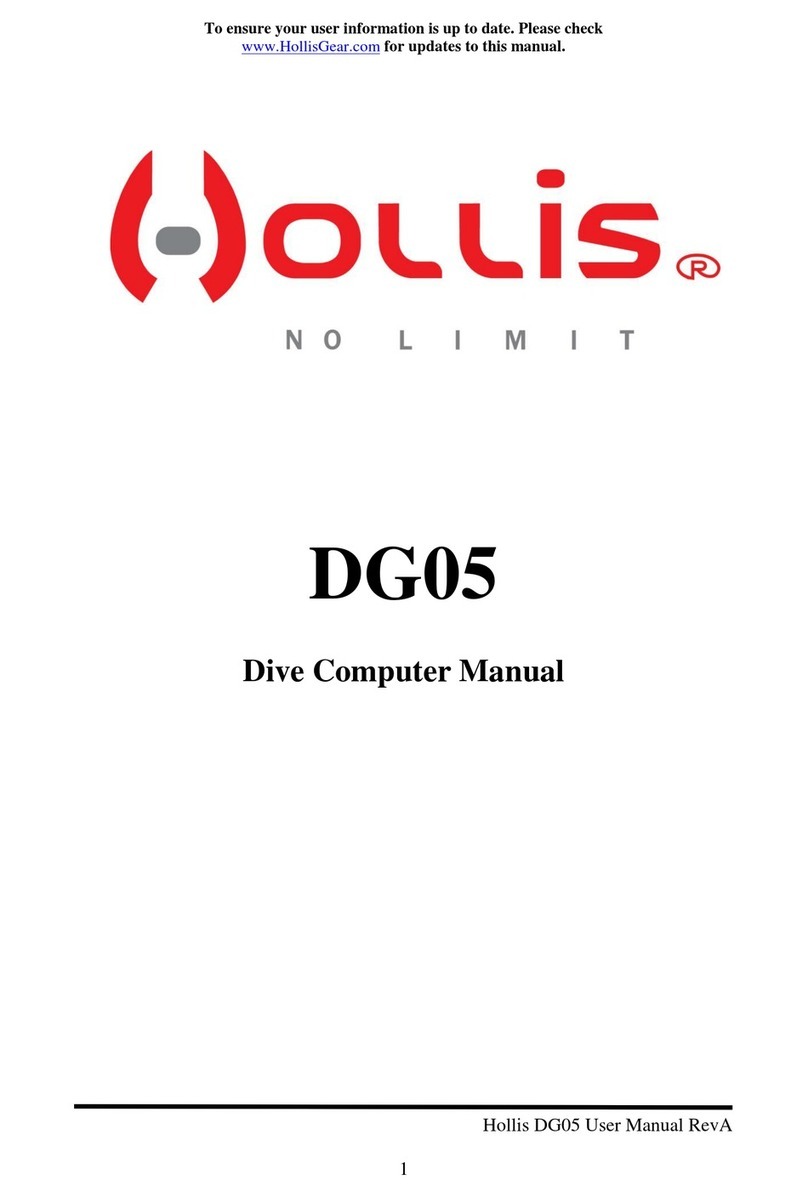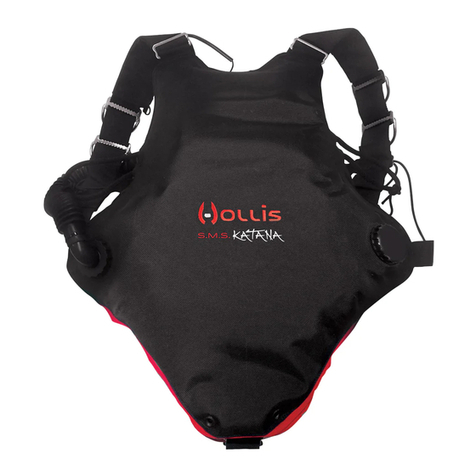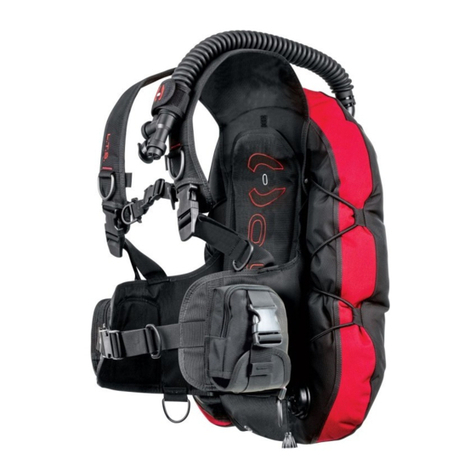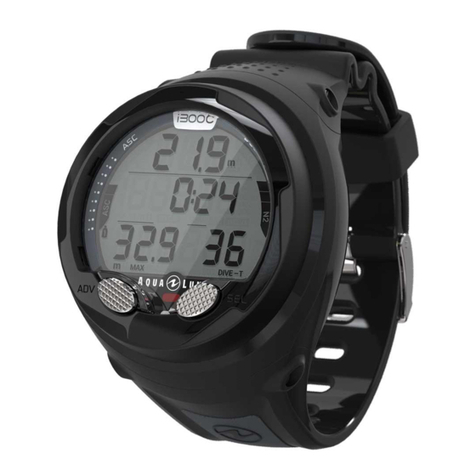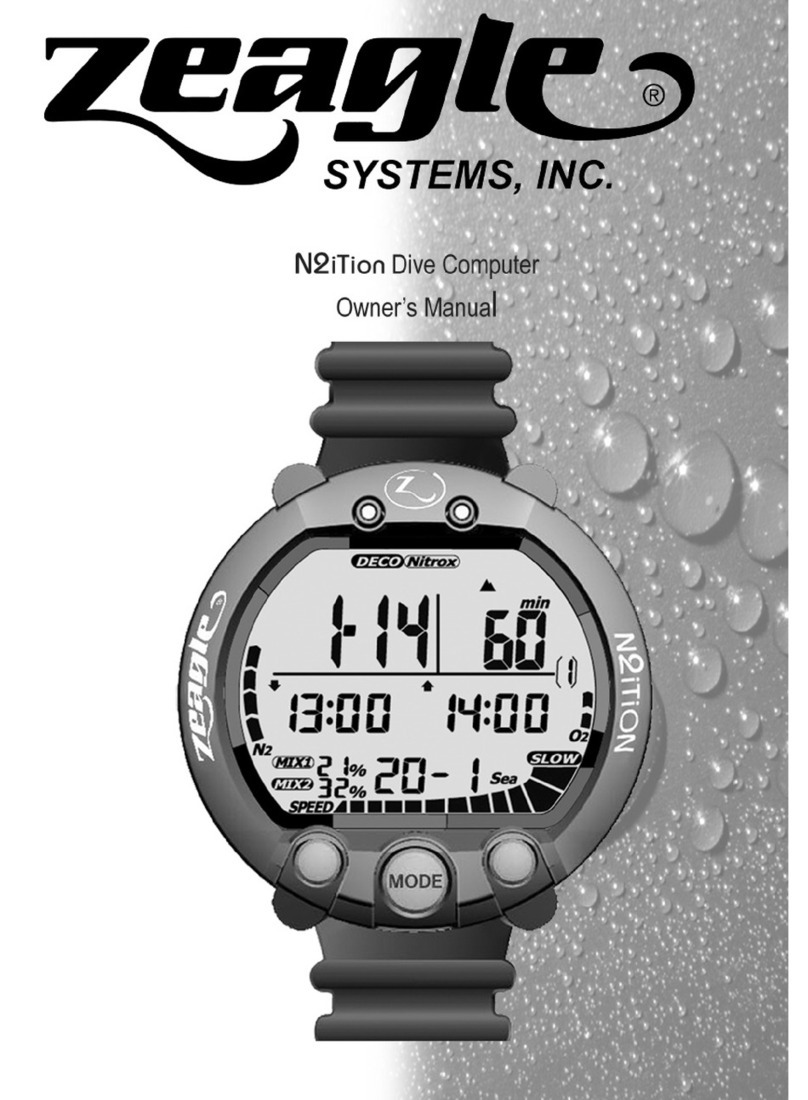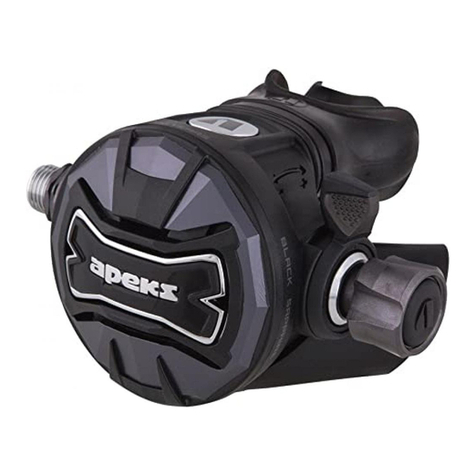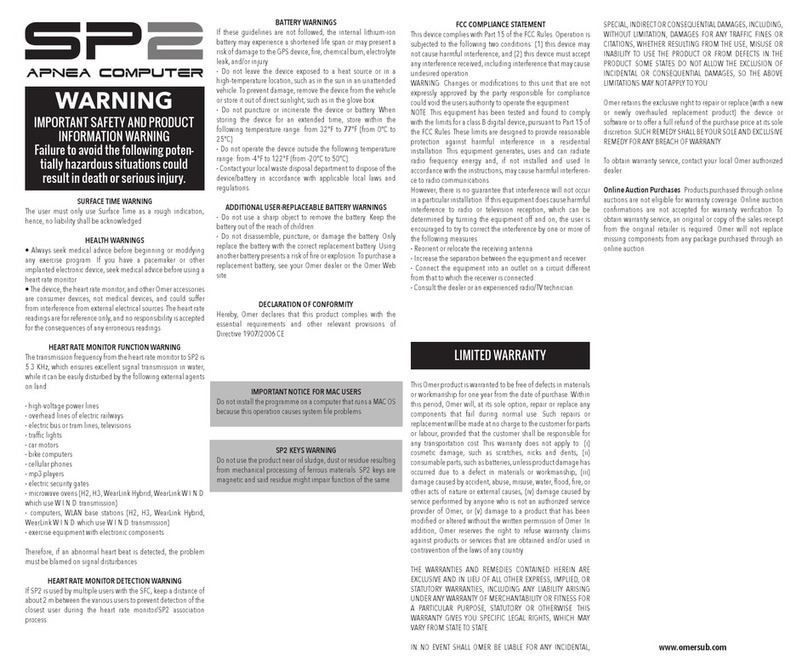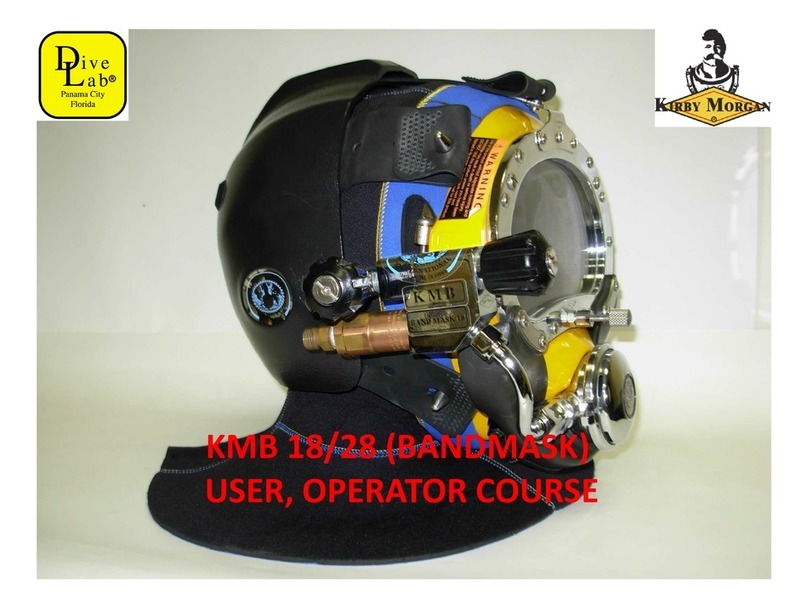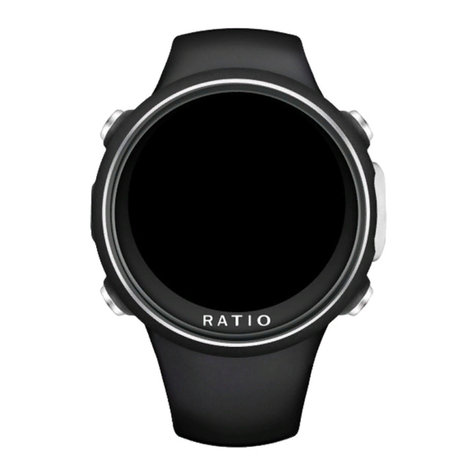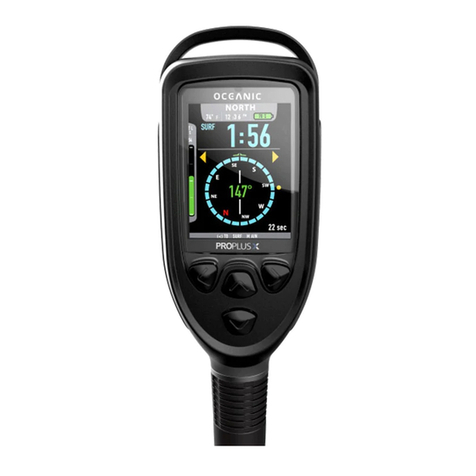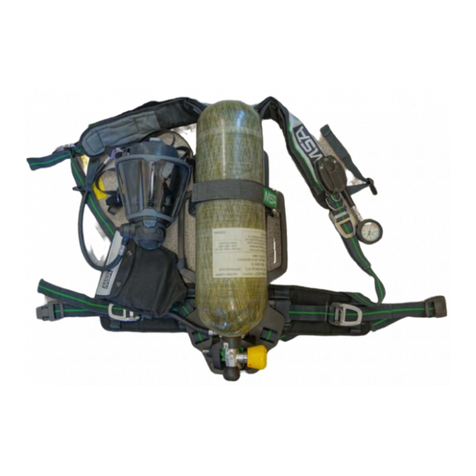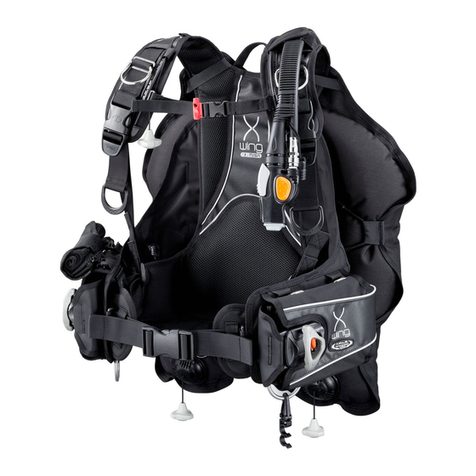
| 3
The DiveCAN® standard was designed to improve rebreather electronics.
It offers the following advantages over the previous generation of analog
wiring:
Robust error-checked communications. A message is either received
correctly or it isn’t. Compare this with analog wiring where corrosion or
poor connections can result in incorrect data being used. Upgradable and
expandable. As new technologies are introduced, they can be plugged
into existing rebreathers. Components (handset, HUD, etc) can be easily
removed for travel, repair, backup, and upgrades.
Modular design compartmentalizes critical functions for redundancy. For
example, the Solenoid and Oxygen electronics (SOLO) can measure and
inject oxygen independently of the handset. If the handset is unplugged
or damaged during a dive, the SOLO will continue to control loop PPO2.
Independent SOLO operation is not designed to function at the surface to
avoid continuous solenoid firing, gas loss, or battery drain if disconnected
at the surface.
!WARNING: SOLO operation independent of the wrist display ONLY
functions while the rebreather is submerged in a dive. Accidental
disconnection of the wrist display at the surface will result in loss
of solenoid control. This could lead to an unsafe oxygen level.
Always inspect the unit and perform required checklists before
breathing on the rebreather.
The DiveCAN® connectors are miniature versions of the underwater con-
nectors used in the oil and gas industry (Fig. 2.1). They are robust and
rated to 2000 ft underwater. The index lines must be aligned to plug the
male connector into the female connector.
Additionally, The connectors utilize a locking sleeve to prevent accidental
separation during casual use. Each sleeve is held in place by two O-rings.
To prevent expensive damage, they are designed to break free under
extreme strain, i.e. hooking a cord on a boat ladder during water entry. To
remove the sleeves, slide the two retaining O-rings off of the locking sleeve
(Fig. 2.2). Then spread the sleeve at the seem while pulling it off of the
connectors (Fig. 2.3). Installation is the reverse.
!WARNING: DO NOT dive without the locking sleeves properly
installed and retained with O-rings as shown (Fig. 2.4).
divecan® Advantages
PART 2 . SECTION 2
Fig. 2.2
Fig. 2.3
Fig. 2.4
Male Connector
Female Connector
Fig. 2.1
